The United States is a traveler’s paradise, blending urban sophistication, natural wonders, and cultural diversity into a tapestry of unforgettable experiences. As a travel vlogger who’s roamed 50+ countries, I’ve seen the world’s gems, but the USA’s sheer variety—from New York City’s skyscrapers to Yellowstone’s geysers—stands unmatched. This comprehensive guide unveils the top 10 best places to visit in the USA for 2025, tailored for international and domestic visitors seeking adventure, culture, and relaxation.
Packed with detailed insights on attractions, hotels, dining, currency exchange, transportation, safety, and insider tips, this blog post is your ultimate resource for planning a dream U.S. trip.
Why Choose the USA for Your 2025 Adventure?
The USA is a global leader in tourism, offering destinations that cater to every interest: history buffs marvel at Washington, D.C.’s monuments, thrill-seekers conquer Orlando’s theme parks, and nature lovers lose themselves in the Grand Canyon’s depths. In 2025, the U.S. is enhancing its appeal with sustainable tourism initiatives, such as eco-friendly tours in national parks and expanded public transit in cities like San Francisco. With 50 states spanning tropical islands, alpine peaks, and desert expanses, the country delivers year-round appeal.
Cultural festivals, from Mardi Gras in New Orleans to cherry blossom season in D.C., add vibrancy, while world-class infrastructure—major airports, highways, and visa options like ESTA—ensures accessibility. Whether you’re chasing urban buzz or serene landscapes, the USA’s diversity makes it a must-visit. This guide covers practicalities like budgeting ($150-400/day for mid-range travel), tipping (15-20% at restaurants), and cultural etiquette (respect personal space, queue politely), ensuring you’re prepared for an epic journey.
Top 10 Must-Visit Places in the USA for 2025
Below, I’ve detailed the top 10 best places to visit in the USA, selected for their global appeal, cultural significance, and visitor-friendly amenities. Each section includes in-depth information on why to visit, top attractions, dining, accommodations, transportation, currency exchange, safety, seasonal tips, and unique insights from my travels. These destinations span cities, national parks, and islands, ensuring a mix of urban, natural, and cultural experiences.
1. New York City, New York: The World’s Urban Epicenter
Why Visit New York City?
New York City, often called the “Capital of the World,” is a pulsating metropolis where dreams meet reality. Its skyline, dotted with icons like the Empire State Building, reflects ambition, while neighborhoods like Harlem and Chinatown showcase cultural diversity. NYC is a must-visit for its unmatched blend of art, theater, cuisine, and history. From strolling Central Park’s leafy paths to catching a Broadway show, every moment feels cinematic.
In 2025, NYC is rolling out new attractions, including expanded exhibits at the Museum of Modern Art and eco-friendly bike lanes, making it more visitor-friendly. As a vlogger, I’ve wandered its streets at dawn and midnight, and the energy never fades—it’s a city that demands exploration.
Top Attractions
-
Statue of Liberty & Ellis Island (Battery Park): This symbol of freedom is a must-see. Take the Statue City Cruises ferry ($24.50/adult, book 2-3 months ahead) for access to the pedestal or crown (extra fee, 354 stairs). Ellis Island’s Immigration Museum details America’s melting-pot history.
-
Times Square (Midtown): A neon-lit spectacle with billboards, street performers, and shops like M&M’s World. Visit at night for the full effect; grab a discounted Broadway ticket at the TKTS booth.
-
Central Park (59th St to 110th St): Spanning 843 acres, it offers the Bethesda Fountain, Strawberry Fields (John Lennon memorial), and seasonal activities like ice-skating at Wollman Rink ($15-35, winter only).
-
Metropolitan Museum of Art (1000 5th Ave): With 2 million artworks, from Egyptian mummies to Van Gogh paintings, it’s a cultural treasure ($30/adult, includes same-day entry to The Cloisters).
-
High Line (Gansevoort St to 34th St): An elevated park on a former railway, blending gardens, art, and skyline views. Free entry; visit at sunset for Instagram-worthy shots.
-
Lesser-Known Gem: The Tenement Museum (103 Orchard St) offers guided tours of immigrant life in the 19th century ($30, book ahead).
Where to Eat
NYC’s dining scene is a global feast. For iconic eats, visit Katz’s Delicatessen (205 E Houston St), serving pastrami sandwiches ($25) since 1888—don’t skip the pickles. Fine dining awaits at Le Bernardin (155 W 51st St), a Michelin-starred seafood haven (tasting menu ~$200, reservations 4-6 weeks out). Smorgasburg (Williamsburg, Brooklyn, April-October) is an open-air market with 100+ vendors offering tacos, ramen burgers, and vegan treats (average $10-15/dish).
For budget bites, halal carts (ubiquitous in Midtown) serve chicken over rice ($8), while Gray’s Papaya (2090 Broadway) offers classic hot dogs ($2.50). Coffee lovers should hit Stumptown Coffee Roasters (30 W 8th St) for artisanal brews ($4-6). Food tours, like those by Foods of NY Tours (~$75), explore neighborhoods like Greenwich Village.
Where to Stay
-
Budget: Pod Times Square (400 W 42nd St, from $100/night) offers compact rooms with shared or private baths, steps from Times Square. HI NYC Hostel (891 Amsterdam Ave, from $50/night) is clean and social, ideal for backpackers.
-
Mid-Range: The Standard, High Line (848 Washington St, from $250/night) boasts trendy decor and Hudson River views. Moxy NYC Times Square (485 7th Ave, from $200/night) blends style and affordability.
-
Luxury: The Plaza (768 5th Ave, from $700/night) is a historic icon near Central Park, with opulent rooms and afternoon tea. 1 Hotel Central Park (1414 6th Ave, from $500/night) emphasizes sustainability with reclaimed wood interiors.
-
Tip: Book 3-6 months ahead for peak seasons (summer, holidays). Airbnb options in Brooklyn or Queens can save costs but check for legal listings.
Practical Tips
-
Currency Exchange: USD is the only currency; exchange at banks like Chase (270 Park Ave) or Citibank (201 W 34th St) for rates better than airport kiosks (JFK fees ~5%). ATMs are widespread; avoid high-fee ones in tourist areas. Credit cards (Visa, Mastercard) are accepted nearly everywhere.
-
Transportation: The subway ($3/ride, $33/week for unlimited MetroCard) is fastest; download the MTA app for schedules. Buses ($3) are scenic but slower. Rideshares (Uber, Lyft, ~$15 for 10-minute rides) or yellow taxis are convenient. Walk or rent a Citi Bike ($4.49/30 minutes) for short distances.
-
Best Time: Spring (March-May) or fall (September-November) offers mild weather (50-70°F) and fewer crowds. Summer is hot (80-90°F), winter (20-40°F) brings holiday markets but snow.
-
Safety: NYC is safe but stay vigilant in crowded areas like Times Square. Avoid empty subway cars late at night; keep wallets in front pockets.
-
Connectivity: Buy a prepaid SIM (T-Mobile, $50 for 30 days, unlimited data) at JFK or stores like Best Buy (529 5th Ave). Free Wi-Fi at Starbucks or public libraries.
Important Note for Visitors: NYC is fast-paced—plan 4-7 days to cover major sights. Book attractions (Statue of Liberty, Broadway shows) 2-3 months ahead via official sites like StatueCityCruises.com or Telecharge.com. Comfortable shoes are essential for walking (expect 10-15K steps/day). Respect local etiquette: don’t block sidewalks, and tip 15-20% at restaurants.
2. Grand Canyon National Park, Arizona: A Geological Marvel
Why Visit the Grand Canyon?
The Grand Canyon, a UNESCO World Heritage Site, is a testament to nature’s grandeur, carved over 6 million years by the Colorado River. Spanning 277 miles long, up to 18 miles wide, and a mile deep, its layered cliffs glow in hues of red, orange, and gold. It’s a bucket-list destination for hikers, photographers, and families, offering humbling vistas and thrilling adventures.
In 2025, the park is introducing new ranger-led programs on Native American history (Havasupai, Navajo tribes) and sustainable trail practices. Having camped under its starlit skies, I can attest: the Grand Canyon feels like standing at the edge of eternity.
Top Attractions
-
South Rim (Grand Canyon Village): Most accessible, with viewpoints like Mather Point (stunning sunrises) and Yavapai Observation Station (geology exhibits). Free shuttle buses connect key spots.
-
Bright Angel Trail: A popular day hike (3-6 hours roundtrip to Indian Garden, 9.5 miles); no permit needed for day hikes, but bring water (no sources en route).
-
Grand Canyon Skywalk (West Rim): A glass bridge 4,000 feet above the canyon ($49 entry, $20 for Skywalk, 2.5 hours from South Rim). Operated by the Hualapai Tribe, not part of the national park.
-
Havasu Falls (Havasupai Reservation): Turquoise waterfalls; requires a 10-mile hike and permits ($100-125/person, apply January-February via HavasupaiTribe.com).
-
North Rim: Remote and quieter, open May-October, with trails like North Kaibab (14 miles to Roaring Springs).
-
Lesser-Known Gem: Desert View Watchtower offers panoramic views and Native American art exhibits.
Where to Eat
Dining options are limited inside the park, so plan ahead. El Tovar Dining Room (El Tovar Hotel, South Rim) is a historic gem serving Southwestern dishes like bison ribeye ($40) and vegetarian chili ($15); reservations recommended. Bright Angel Restaurant (Bright Angel Lodge) offers casual fare—burgers, salads, and Navajo tacos ($10-20).
Canyon Village Market (Market Plaza) has a deli for sandwiches ($8-12) and groceries for picnics. Outside the park, Plaza Bonita (352 AZ-64, Tusayan, 7 miles away) serves Mexican favorites like enchiladas ($15). Food trucks near visitor centers offer quick bites (hot dogs, wraps, $5-10). Pack snacks and at least 2 liters of water per person for hikes, as dehydration is a risk.
Where to Stay
-
Budget: Maswik Lodge (South Rim, from $90/night) offers basic rooms, ideal for families. Grand Canyon Inn & Motel (257 S State Route 64, Valle, 30 miles away, from $80/night) is affordable but requires a drive.
-
Mid-Range: Yavapai Lodge (South Rim, from $150/night) is near Market Plaza, with pet-friendly options. Thunderbird Lodge (South Rim, from $180/night) has rim views.
-
Luxury: El Tovar Hotel (South Rim, from $250/night) is a 1905 landmark with elegant suites. Outside, The Grand Hotel (149 State Route 64, Tusayan, from $200/night) offers upscale amenities.
-
Camping: Mather Campground (South Rim, from $18/night, book 6 months ahead via Recreation.gov). Desert View Campground (open April-October, $18/night) is first-come, first-served.
-
Tip: Book park lodging 12-15 months ahead; Tusayan hotels fill up fast in summer.
Practical Tips
-
Currency Exchange: USD only; exchange in Tusayan (Grand Canyon Airport) or Flagstaff (banks like Wells Fargo, 1201 S Plaza Way). Park ATMs are limited; bring cash for small vendors. Credit cards accepted at lodges.
-
Transportation: Rent a car from Phoenix (4-hour drive, $50-100/day) or Las Vegas (4.5-hour drive). Free South Rim shuttles (Hermit Road, Kaibab Rim routes) run every 10-15 minutes. Guided tours (e.g., Pink Jeep Tours, $100-200) offer hassle-free access. No public transit to the park.
-
Best Time: Spring (March-May, 50-70°F) and fall (September-November, 40-65°F) are ideal; summer (June-August, 80-90°F) is crowded, winter (December-February, 20-45°F) may close trails.
-
Safety: Stay on marked trails—falls are a leading injury cause. Watch for heat exhaustion (symptoms: dizziness, nausea). Wildlife (elk, condors) should be viewed from 100 feet.
-
Permits: Day hikes are permit-free; backcountry camping or Havasu Falls requires permits (apply 4-6 months ahead). Park entry: $35/vehicle, valid 7 days.
Important Note for Visitors: Hydration is critical—carry 2-4 liters of water per person for hikes, as no potable water exists on major trails. Trails like Bright Angel are strenuous; beginners should stick to rim walks or short descents (1-2 miles). Book lodging and tours 6-12 months ahead, especially for summer. Respect Native American lands by following Havasupai guidelines (no drones, no littering).
3. San Francisco, California: Where Culture Meets Scenic Beauty
Why Visit San Francisco?
San Francisco, nestled between the Pacific Ocean and rolling hills, is a vibrant blend of history, innovation, and natural splendor. The Golden Gate Bridge, a 1.7-mile Art Deco marvel, is its crown jewel, but the city’s charm lies in its neighborhoods—Chinatown’s bustling markets, Haight-Ashbury’s bohemian vibe, and the Mission’s Latino heritage.
As a tech hub, it’s forward-thinking, with 2025 bringing new BART expansions and eco-tours to Alcatraz. I’ve cycled its foggy streets and savored dim sum at dawn; San Francisco’s eclectic energy captivates every traveler, from foodies to history buffs.
Top Attractions
-
Golden Gate Bridge (Fort Point to Marin Headlands): Walk or bike (rentals at Blazing Saddles, $10/hour) for panoramic views. The Welcome Center offers free exhibits on its 1937 construction.
-
Alcatraz Island (Pier 33): Tour the infamous former prison ($45.25/adult, includes ferry, book 2-3 months via AlcatrazCityCruises.com). Night tours ($56.25) add eerie ambiance.
-
Fisherman’s Wharf (Pier 39): See sea lions, shop, and dine. Don’t miss the Musée Mécanique, a quirky arcade with vintage games (free entry, games $0.25-1).
-
Chinatown (Grant Ave & Bush St): North America’s oldest, with temples (Tin How Temple, free) and markets. Join a walking tour ($35, Wok Wiz Tours) for history.
-
Muir Woods National Monument (1 Muir Woods Rd, 45-minute drive): Towering redwoods; entry $15/adult, book parking ($9) in advance.
-
Lesser-Known Gem: Lands End Trail (680 Point Lobos Ave) offers coastal hikes to the Sutro Baths ruins and Pacific views.
Where to Eat
San Francisco is a foodie haven. Scoma’s (1965 Al Scoma Way, Fisherman’s Wharf) serves Dungeness crab and cioppino ($30-50) with bay views; book ahead. House of Nanking (919 Kearny St, Chinatown) offers budget-friendly Chinese dishes like sesame chicken ($12-18).
Tartine Bakery (600 Guerrero St, Mission) is famed for croissants and country bread ($5-10); expect lines. Off the Grid (Fort Mason, Friday evenings, March-October) hosts food trucks with global cuisines (tacos, bao buns, $8-15). For fine dining, Atelier Crenn (3127 Fillmore St, 3 Michelin stars) offers poetic French tasting menus (~$400, book 2 months out). Grab coffee at Philz Coffee (201 Berry St, $4-6) for local vibes.
Where to Stay
-
Budget: HI San Francisco Downtown Hostel (312 Mason St, from $50/night) is central, with dorms and private rooms. Green Tortoise Hostel (494 Broadway, from $45/night) has a lively vibe.
-
Mid-Range: Hotel Nikko (222 Mason St, from $200/night) offers sleek rooms near Union Square. Argonaut Hotel (495 Jefferson St, Fisherman’s Wharf, from $250/night) has nautical charm.
-
Luxury: Fairmont San Francisco (950 Mason St, from $400/night) is a historic icon with panoramic views. Palace Hotel (2 New Montgomery St, from $350/night) boasts a stunning Garden Court.
-
Tip: Book 3-6 months ahead for summer or holidays. Stay in Union Square or Fisherman’s Wharf for proximity to attractions.
Practical Tips
-
Currency Exchange: USD only; exchange at Wells Fargo (420 Montgomery St) or Bank of America (345 Montgomery St) for low fees. Avoid SFO airport kiosks (fees ~7%). ATMs are plentiful; cards accepted widely.
-
Transportation: BART ($10 from SFO to downtown, $2-5 within city) is efficient; buy Clipper cards ($3). Cable cars ($8/ride) are iconic but touristy. Muni buses/trams ($2.50) cover most areas. Rideshares (Uber, ~$10-20 for 15-minute rides) or bikes (Bay Wheels, $3.49/30 minutes) are convenient.
-
Best Time: September-November (60-75°F, clear skies) is ideal; summer (June-August, 55-70°F) is foggy. Spring (March-May) brings wildflowers to nearby parks.
-
Safety: Avoid Tenderloin at night; keep bags secure in tourist areas. Homelessness is visible but rarely dangerous.
-
Dress: Layered clothing (jacket, scarf) for microclimates; fog can drop temperatures 10-15°F.
Important Note for Visitors: San Francisco’s hills are steep—wear sturdy shoes (avoid heels). Book Alcatraz and Muir Woods tickets 2-3 months ahead via official sites to avoid scalpers. Respect local diversity; learn basic phrases like “thank you” in Cantonese (“m goi”) for Chinatown visits. Expect 7-10K steps/day exploring.
4. Orlando, Florida: The Magic of Theme Parks
Why Visit Orlando?
Orlando, the “Theme Park Capital of the World,” is a family-friendly haven where imagination thrives. Home to Walt Disney World, Universal Studios, and SeaWorld, it’s a dream destination for kids, teens, and adults seeking thrills and nostalgia. Beyond parks, Orlando offers lakes, museums, and nearby beaches (Cocoa Beach, 1-hour drive).
In 2025, new attractions include EPCOT’s revamped World Celebration and Universal’s Epic Universe park, opening with immersive lands like Super Nintendo World. I’ve felt the magic riding Space Mountain at midnight—Orlando is pure joy.
Top Attractions
-
Walt Disney World (Lake Buena Vista): Four parks—Magic Kingdom (Cinderella Castle, $109-189/day), EPCOT (global pavilions), Hollywood Studios (Star Wars: Galaxy’s Edge), Animal Kingdom (Pandora). Plan 4-7 days; multi-day tickets save money.
-
Universal Studios Orlando (6000 Universal Blvd): Two parks—Universal Studios (Wizarding World of Harry Potter, Diagon Alley) and Islands of Adventure (Hogsmeade, Jurassic World). Tickets $109-159/day; Express Pass ($80+) skips lines.
-
SeaWorld Orlando (7007 Sea World Dr): Marine shows, roller coasters like Mako, and animal encounters ($80-140/day).
-
ICON Park (8375 International Dr): The Wheel (400-ft observation wheel, $28), SEA LIFE Aquarium, and dining.
-
Lesser-Known Gem: Harry P. Leu Gardens (1920 N Forest Ave) offers 50 acres of botanical beauty ($15, serene escape).
Where to Eat
Orlando’s dining ranges from theme park treats to global cuisine. Victoria & Albert’s (Disney’s Grand Floridian, 4401 Floridian Way) is a Michelin-starred gem with tasting menus ($295, book 60 days via DisneyWorld.com). Satu’li Canteen (Animal Kingdom) serves affordable, healthy bowls ($12-18) in Pandora-themed decor. 4 Rivers Smokehouse (874 W Osceola Pkwy, Kissimmee) offers BBQ brisket and cornbread ($15-25). International Drive has chains like Olive Garden and local spots like Hash House A Go Go (5350 International Dr) for oversized pancakes ($10-20). Food courts in parks (e.g., Magic Kingdom’s Columbia Harbour House) offer kid-friendly meals ($8-15). Try Gideon’s Bakehouse (Disney Springs) for massive cookies ($6).
Where to Stay
-
Budget: Rosen Inn International (7600 International Dr, from $80/night) is near Universal with free shuttles. Comfort Suites Maingate East (2775 Florida Plaza Blvd, from $90/night) suits Disney visitors.
-
Mid-Range: Universal’s Cabana Bay Resort (6550 Adventure Way, from $150/night) has retro vibes and early park entry. Hyatt Regency Grand Cypress (1 Grand Cypress Blvd, from $200/night) offers a lagoon pool.
-
Luxury: Four Seasons Resort Orlando (10100 Dream Tree Blvd, from $500/night) is inside Disney with a waterpark. Loews Sapphire Falls Resort (6601 Adventure Way, from $250/night) feels like a Caribbean escape.
-
Tip: On-site Disney/Universal hotels include perks like early entry; book 6-12 months ahead.
Practical Tips
-
Currency Exchange: USD only; exchange at Orlando International Airport (Bank of America, Terminal B) or SunTrust Bank (5899 Caravan Ct). ATMs are widespread; cards accepted at parks. Avoid hotel kiosks (high fees).
-
Transportation: Rent a car ($40-80/day) for flexibility; parks offer free parking for on-site guests. Hotel shuttles (e.g., Rosen Inn) are free. Lyft/Uber ($10-20 for 10-minute rides) work well. Disney’s Skyliner (gondolas) connects select resorts to EPCOT/Hollywood Studios.
-
Best Time: January-April (60-80°F) for cooler weather; avoid spring break (March) and summer (90°F, crowded). September-October is quieter.
-
Safety: Parks are safe; keep bags secure on rides. Apply sunscreen (SPF 50) and stay hydrated.
-
Tickets: Buy multi-day park passes via DisneyWorld.com or UniversalOrlando.com for savings. Use apps (My Disney Experience, Universal Orlando) for wait times and dining reservations.
Important Note for Visitors: Theme park days are long (10-12 hours)—bring water bottles, portable chargers, and comfortable shoes. Use FastPass+ (Disney, free) or Express Pass (Universal, $80+) to skip lines. Book dining (e.g., Be Our Guest) 60 days ahead. Budget $150-250/day per person for tickets, food, and parking.
5. Yellowstone National Park, Wyoming/Montana/Idaho: Nature’s Wonderland
Why Visit Yellowstone?
Yellowstone, America’s first national park (established 1872), is a 2.2-million-acre masterpiece of geothermal activity, wildlife, and rugged beauty. Home to more geysers than anywhere on Earth, it’s a haven for adventurers and families. Bison roam Lamar Valley, Old Faithful erupts like clockwork, and the Grand Prismatic Spring dazzles with rainbow hues.
In 2025, Yellowstone is enhancing accessibility with new boardwalks and virtual ranger talks. I’ve hiked its trails and camped by its lakes—the park’s raw power and serenity are unmatched.
Top Attractions
-
Old Faithful (Upper Geyser Basin): Erupts every 60-90 minutes (predictable within 10 minutes); view from the boardwalk or Old Faithful Inn’s balcony. Free ranger talks daily.
-
Grand Prismatic Spring (Midway Geyser Basin): A 370-ft-wide hot spring with vibrant colors; hike the Fairy Falls Trail (1.2 miles) for an overlook.
-
Lamar Valley (Northeast Entrance): Prime wildlife spot for bison, wolves, and grizzly bears; bring binoculars. Guided tours ($100-200) enhance sightings.
-
Yellowstone Lake (West Thumb): Scenic boating ($20/hour) and fishing (permit $40/week). The Lake Overlook Trail (2 miles) offers views.
-
Lesser-Known Gem: Mammoth Hot Springs (North Entrance) features terraced limestone pools and elk grazing nearby.
Where to Eat
Dining is rustic but satisfying. Old Faithful Inn Dining Room (Old Faithful Inn) serves buffalo burgers ($18) and trout ($25); book 1-2 months ahead. Lake Yellowstone Hotel Dining Room (Lake Village) offers upscale dishes like elk chops ($35) with lake views.
Canyon Village Eatery (Canyon Village) has casual options—sandwiches, salads ($10-15). General Stores (e.g., Old Faithful, $5-10) sell snacks and picnic supplies. Outside, Wild West Pizzeria (14 Madison Ave, West Yellowstone, 20 miles away) offers hearty pizzas ($15-25). Pack snacks and water (2 liters/person) for remote areas, as options are sparse.
Where to Stay
-
Budget: Old Faithful Lodge Cabins (Old Faithful, from $100/night) are basic with shared baths. Canyon Lodge Cabins (Canyon Village, from $120/night) are simple but central.
-
Mid-Range: Lake Yellowstone Hotel (Lake Village, from $200/night) is historic with lake views. Grant Village Lodge (Grant Village, from $180/night) suits families.
-
Luxury: The Lodge at Yellowstone (301 Madison Ave, West Yellowstone, from $300/night) offers upscale cabins. Explorer Cabins (201 Grizzly Ave, West Yellowstone, from $250/night) are modern.
-
Camping: Madison Campground (near West Entrance, $28/night, book via Recreation.gov). Bridge Bay Campground (near Lake, $28/night) has lake views.
-
Tip: Book park lodging 12-15 months ahead; gateway towns (West Yellowstone, Gardiner) fill up fast.
Practical Tips
-
Currency Exchange: USD only; exchange in West Yellowstone (First Interstate Bank, 100 S Canyon St) or Jackson Hole (Bank of Jackson Hole, 990 W Broadway). Park ATMs are limited; bring cash. Cards accepted at lodges.
-
Transportation: Rent a car from Bozeman (2-hour drive, $60-120/day) or Jackson Hole (1-hour drive). Park roads close November-April except North Entrance. Free park maps guide self-drives. Guided tours (Yellowstone Forever, $150-300) cover wildlife and geology.
-
Best Time: May-September (50-80°F) for open roads; July-August is busiest. Winter (20-40°F) offers snowcoach tours but limited access.
-
Safety: Keep 100 yards from bears/wolves, 25 yards from bison/elk. Carry bear spray ($50, available at visitor centers) and hike in groups.
-
Connectivity: Cell service is spotty; download offline maps (Google Maps, Gaia GPS). Wi-Fi at Old Faithful Inn is slow.
Important Note for Visitors: Yellowstone is vast—plan 3-5 days to explore key areas (Old Faithful, Canyon, Lamar Valley). Roads are slow (45 mph max); budget extra driving time. Book lodging and tours 6-12 months ahead. Respect geothermal areas—stay on boardwalks to avoid burns. Carry layers for unpredictable weather (rain, wind).
6. New Orleans, Louisiana: The Heartbeat of Creole Culture
Why Visit New Orleans?
New Orleans is a soulful city where jazz flows like the Mississippi River, and Creole cuisine tantalizes the palate. Known for Mardi Gras, the French Quarter’s historic charm, and a laid-back vibe, it’s a cultural haven for music lovers, foodies, and history enthusiasts.
In 2025, the city hosts the Super Bowl (February 9) alongside Mardi Gras (March 4), amplifying its festive spirit. I’ve danced to brass bands on Frenchmen Street and savored gumbo at dusk—New Orleans feels like a warm embrace.
Top Attractions
-
French Quarter (Bourbon St to Esplanade Ave): Cobblestone streets, St. Louis Cathedral (free entry), and Jackson Square’s street artists. Explore Preservation Hall ($25, live jazz nightly).
-
Frenchmen Street (Marigny): Jazz clubs like The Spotted Cat and Blue Nile ($10-20 cover); visit after 8 PM for live music.
-
Garden District (Magazine St): Historic mansions and Lafayette Cemetery No. 1 (free, guided tours $20). Take the St. Charles Streetcar ($1.25) for views.
-
Swamp Tours (30-60 minutes from downtown): See alligators and Cajun history ($25-75, Bayou Swamp Tours). Kayak tours ($60) offer eco-friendly options.
-
Lesser-Known Gem: New Orleans Jazz Museum (400 Esplanade Ave, $8) showcases instruments and live performances.
Where to Eat
New Orleans is a culinary capital. Café du Monde (800 Decatur St, open 24/7) serves beignets ($3.50 for three) and chicory coffee ($3). Commander’s Palace (1403 Washington Ave, Garden District) offers upscale Creole dishes like turtle soup ($12) and pecan-crusted fish ($40); book 1 month ahead. Willie Mae’s Scotch House (2401 St Ann St, Treme) is legendary for fried chicken ($15, expect lines).
Dooky Chase’s Restaurant (2301 Orleans Ave) serves gumbo and shrimp Creole ($20-30), a Civil Rights landmark. Street vendors sell po’boys ($8-12) and muffulettas ($10) near the French Quarter. Try Central Grocery (923 Decatur St) for the original muffuletta.
Where to Stay
-
Budget: India House Hostel (124 S Lopez St, from $40/night) has a lively vibe and pool. Quisby Hostel (1225 St Charles Ave, from $45/night) is near the streetcar.
-
Mid-Range: Hotel Monteleone (214 Royal St, French Quarter, from $150/night) is historic with a Carousel Bar. Drury Plaza Hotel (820 Poydras St, from $140/night) includes free breakfast.
-
Luxury: The Ritz-Carlton New Orleans (921 Canal St, from $350/night) offers spa amenities. Windsor Court Hotel (300 Gravier St, from $300/night) has river views.
-
Tip: Book 6-12 months ahead for Mardi Gras or major events; stay in the French Quarter or Central Business District for walkability.
Practical Tips
-
Currency Exchange: USD only; exchange at Whitney Bank (228 St Charles Ave) or ATMs. Avoid Bourbon Street kiosks (high fees). Cards accepted widely.
-
Transportation: Walk the French Quarter; streetcars ($1.25/ride, $3/day pass) connect to Garden District. Rideshares (Uber, $8-15 for 10-minute rides) are reliable. Rent bikes ($10/hour, Blue Bikes) for Marigny.
-
Best Time: February-April (60-75°F) for Mardi Gras and festivals; avoid hurricane season (June-November, 80-90°F, rainy). May and October are quieter.
-
Safety: Stick to well-lit areas at night (French Quarter, Marigny). Beware of pickpockets during festivals; keep bags secure.
-
Festivals: Mardi Gras requires planning (free parades, book hotels early). Jazz Fest (April-May, $80-100/day) is a music highlight.
Important Note for Visitors: New Orleans is festive but respect local traditions—don’t touch Mardi Gras floats or climb parade ladders. Book hotels and dining 6-12 months ahead for major events. Wear comfortable shoes for uneven sidewalks; expect 5-8K steps/day. Learn basic Creole phrases like “lagniappe” (a little extra) to connect with locals.
7. Hawaii (Oahu and Kauai): A Tropical Escape
Why Visit Hawaii?
Hawaii’s islands are a tropical paradise, blending turquoise beaches, volcanic landscapes, and Polynesian culture. Oahu offers urban energy with Waikiki’s surf scene and Honolulu’s history, while Kauai, the “Garden Island,” delivers lush rainforests and rugged coasts
Hawaii is promoting sustainable tourism with new eco-tours and coral restoration projects. I’ve surfed Oahu’s waves and hiked Kauai’s cliffs—Hawaii’s aloha spirit is infectious, making it ideal for relaxation and adventure.
Top Attractions
-
Waikiki Beach (Oahu, Kalakaua Ave): Iconic for surfing ($20/hour lessons) and sunsets. Nearby, Diamond Head State Monument ($5 entry, 1.6-mile hike) offers panoramic views.
-
Pearl Harbor National Memorial (Oahu, 1 Arizona Memorial Pl): USS Arizona Memorial (free, book 8 weeks via Recreation.gov) and museums ($20-25).
-
Na Pali Coast (Kauai, North Shore): Dramatic cliffs; hike the Kalalau Trail (11 miles, permit $35) or take a boat tour ($150-200, Na Pali Catamaran).
-
Hawaii Volcanoes National Park (Big Island, day trip from Oahu): See Kilauea’s lava fields ($30/vehicle, 1-hour flight from Honolulu).
-
Lesser-Known Gem: Byodo-In Temple (Oahu, 47-200 Kahekili Hwy, $5) is a serene Japanese temple in a lush valley.
Where to Eat
Hawaiian cuisine is a fusion of Polynesian, Asian, and American flavors. Helena’s Hawaiian Food (Oahu, 1240 N School St) serves kalua pig and laulau ($12-20, cash only). The Beach House (Kauai, 5022 Lawai Rd) offers seafood like seared ahi ($35) with ocean views; book 2 weeks ahead.
Food trucks on Oahu’s North Shore (e.g., Giovanni’s Shrimp Truck, 56-505 Kamehameha Hwy) serve garlic shrimp plates ($14). Poke shops like Foodland (Oahu, 1450 Ala Moana Blvd) offer fresh ahi poke ($10-15). For upscale dining, Merriman’s (Kauai, 2829 Ala Kalanikaumaka St, $40-60) showcases farm-to-table dishes. Try Leonard’s Bakery (Oahu, 933 Kapahulu Ave) for malasadas ($1.50).
Where to Stay
-
Budget: Polynesian Hostel Beach Club (Oahu, 2584 Lemon Rd, from $50/night) is near Waikiki. Kauai Shores Hotel (Kauai, 420 Papaloa Rd, from $100/night) is budget-friendly.
-
Mid-Range: Outrigger Waikiki Beach Resort (Oahu, 2335 Kalakaua Ave, from $200/night) has beachfront access. Waimea Plantation Cottages (Kauai, 9400 Kaumualii Hwy, from $250/night) offer historic charm.
-
Luxury: Grand Hyatt Kauai Resort & Spa (Kauai, 1571 Poipu Rd, from $500/night) boasts pools and gardens. Turtle Bay Resort (Oahu, 57-091 Kamehameha Hwy, from $400/night) is on the North Shore.
-
Tip: Book 6-9 months ahead; Airbnb condos are popular but pricier in peak seasons.
Practical Tips
-
Currency Exchange: USD only; exchange at Honolulu Airport (Bank of Hawaii, Terminal 2) or Central Pacific Bank (2200 Kamehameha Hwy, Oahu). ATMs are common; cards accepted widely.
-
Transportation: Rent a car for Kauai ($50-100/day, essential for Na Pali). Oahu’s TheBus ($3/ride, $7.50/day pass) covers Waikiki to Pearl Harbor. Trolleys ($5) serve tourist areas. Rideshares (Uber, $15-25 for 15-minute rides) are convenient.
-
Best Time: Year-round (75-85°F); April-May and September-October are less crowded. Winter (November-March) brings big waves for surfers.
-
Safety: Strong ocean currents require caution; swim at lifeguarded beaches. Apply reef-safe sunscreen (SPF 30+).
-
Culture: Respect sacred sites (e.g., heiau temples); learn phrases like “aloha” (hello) and “mahalo” (thank you). Avoid removing lava rocks (cultural taboo).
Important Note for Visitors: Hawaii is remote—flights from the mainland take 5-6 hours ($300-600 roundtrip). Book Na Pali tours and volcano park visits 2-3 months ahead. Pack light layers (shorts, rain jacket) and water shoes for hikes. Expect 5-10K steps/day; bring reusable water bottles to reduce plastic waste.
8. Washington, D.C.: History and Culture Hub
Why Visit Washington, D.C.?
Washington, D.C., the U.S. capital, is a treasure trove of history, politics, and culture, with free Smithsonian museums, iconic monuments, and vibrant neighborhoods like Adams Morgan. It’s ideal for families, intellectuals, and photographers.
The cherry blossom festival (March-April) and new National Museum of the American Latino exhibits draw crowds. I’ve walked the National Mall at sunrise, feeling the weight of history—D.C. inspires reflection and awe.
Top Attractions
-
National Mall (Constitution Ave to Independence Ave): See the Lincoln Memorial, Washington Monument (free, $1 for elevator tickets), and Reflecting Pool. Free ranger talks daily.
-
Smithsonian Museums (Mall and nearby): 19 museums, all free. Favorites: National Air and Space Museum (600 Independence Ave), National Museum of African American History and Culture (1400 Constitution Ave, timed passes required).
-
U.S. Capitol (East Capitol St): Free guided tours (book via VisittheCapitol.gov, 3-6 months ahead). Nearby, the Library of Congress (101 Independence Ave SE) stuns with its architecture.
-
Georgetown (M St NW): Historic homes, boutiques, and the waterfront park. The C&O Canal offers kayaking ($20/hour).
-
Lesser-Known Gem: National Arboretum (3501 New York Ave NE, free) features bonsai collections and Capitol columns.
Where to Eat
D.C.’s dining reflects its diversity. Ben’s Chili Bowl (1213 U St NW) serves iconic half-smokes ($8) since 1958. Zaytinya (701 9th St NW) offers Mediterranean small plates ($10-20) by chef José Andrés; book 2 weeks ahead. Eastern Market (225 7th St SE, weekends) has fresh produce and crab cakes ($10-15).
Le Diplomate (1601 14th St NW) delivers French bistro vibes with steak frites ($35). Food trucks near the Mall serve global dishes (falafel, empanadas, $8-12). For coffee, Compass Coffee (1921 8th St NW, $4-6) is a local favorite.
Where to Stay
-
Budget: Duo Housing (1223 11th St NW, from $40/night) is a clean hostel near Logan Circle. Highroad Hostel (1804 Belmont Rd NW, from $45/night) is vibrant.
-
Mid-Range: The Watergate Hotel (2650 Virginia Ave NW, from $200/night) is historic with Potomac views. Hilton Washington DC Capitol Hill (525 New Jersey Ave NW, from $180/night) is near the Capitol.
-
Luxury: Mandarin Oriental (1330 Maryland Ave SW, from $400/night) offers waterfront luxury. The Jefferson (1200 16th St NW, from $350/night) exudes elegance.
-
Tip: Book 3-6 months ahead for spring (cherry blossoms) or fall. Stay near Metro stations for easy access.
Practical Tips
-
Currency Exchange: USD only; exchange at PNC Bank (800 17th St NW) or ATMs. Cards accepted widely; avoid tourist kiosks (high fees).
-
Transportation: Metro ($2-6/ride, SmarTrip card $2) is reliable; download the WMATA app. Capital Bikeshare ($8/day) covers the Mall. Rideshares (Uber, $10-20 for 10-minute rides) are convenient.
-
Best Time: March-May (50-75°F) for cherry blossoms; September-November (50-70°F) for mild weather. Summer (80-90°F) is humid, winter (30-50°F) is quiet.
-
Safety: The Mall is safe; avoid Anacostia at night. Keep bags secure in crowded museums.
-
Tours: Book White House tours (free, via congressperson, 3-6 months ahead) or Capitol tours early.
Important Note for Visitors: D.C. is walkable but expansive—expect 10-15K steps/day. Many attractions are free, but budget $50-100/day for dining and transport. Wear comfortable shoes for the Mall’s gravel paths. Reserve museum passes (e.g., African American History) 30 days ahead via Smithsonian.si.edu.
9. Las Vegas, Nevada: The Entertainment Capital
Why Visit Las Vegas?
Las Vegas is a dazzling oasis of casinos, world-class shows, and desert adventures, earning its title as the “Entertainment Capital of the World.” The Strip’s neon-lit resorts, like Bellagio’s fountains, create a surreal vibe, while day trips to the Grand Canyon or Red Rock Canyon offer natural escapes
New residencies (think global pop stars) and immersive exhibits keep Vegas fresh. I’ve marveled at Cirque du Soleil’s acrobatics and hiked Red Rock’s trails—Vegas is a thrilling paradox of excess and serenity.
Top Attractions
-
The Strip (Las Vegas Blvd): 4 miles of resorts—Bellagio (fountain shows, free), Venetian (indoor canals, gondola rides $39), Caesars Palace (Forum Shops). Walk at night for the full spectacle.
-
Fremont Street Experience (Downtown): A canopy of LED lights, zip line ($25), and live music. Visit the Neon Museum ($20) for vintage signs.
-
High Roller (LINQ Promenade): 550-ft observation wheel ($23.50/day, $34.75/night) with Strip views.
-
Day Trips: Grand Canyon South Rim (4.5-hour drive, tours $100-200), Red Rock Canyon (30-minute drive, hiking free), Hoover Dam (45-minute drive, $10 tour).
-
Lesser-Known Gem: The Sphere (255 Sands Ave, opened 2023) offers immersive concerts and visuals (tickets $50-200).
Where to Eat
Vegas dining spans buffets to Michelin stars. Gordon Ramsay Hell’s Kitchen (Caesars Palace, 3570 S Las Vegas Blvd) serves beef Wellington ($60); book 1 month ahead. Lotus of Siam (620 E Flamingo Rd, off-Strip) is a Thai gem with khao soi ($15-25).
Bacchanal Buffet (Caesars Palace, $80) offers 500+ dishes, from sushi to crab legs. Tacos El Gordo (3049 S Las Vegas Blvd) serves authentic al pastor tacos ($3-5). For cocktails, The Chandelier (Cosmopolitan, 3708 S Las Vegas Blvd) crafts molecular drinks ($15-20). Grab coffee at Mothership Coffee (1028 E Fremont St, $4-6).
Where to Stay
-
Budget: Circus Circus (2880 S Las Vegas Blvd, from $50/night) is family-friendly with a midway. Excalibur (3850 S Las Vegas Blvd, from $60/night) is central.
-
Mid-Range: The LINQ Hotel (3535 S Las Vegas Blvd, from $100/night) is vibrant with High Roller access. Treasure Island (3300 S Las Vegas Blvd, from $120/night) has pirate-themed charm.
-
Luxury: Wynn Las Vegas (3131 S Las Vegas Blvd, from $300/night) offers opulent rooms. Bellagio (3600 S Las Vegas Blvd, from $250/night) is iconic.
-
Tip: Book 3-6 months ahead for weekends or events (CES, Super Bowl). Midweek stays are cheaper.
Practical Tips
-
Currency Exchange: USD only; exchange at Wells Fargo (3025 S Las Vegas Blvd) or ATMs. Casino ATMs charge high fees ($5-10); use bank ATMs. Cards accepted widely.
-
Transportation: Walk the Strip (use pedestrian bridges). Monorail ($1-5/ride) connects major resorts. Rideshares (Uber, $10-20 for 10-minute rides) or Deuce bus ($8/day) are affordable. Rent a car ($40-80/day) for day trips.
-
Best Time: March-May and October-November (60-80°F); summer (100°F) is hot, winter (40-60°F) is quiet.
-
Safety: The Strip is safe; avoid downtown side streets at night. Set gambling budgets to avoid overspending.
-
Shows: Book Cirque du Soleil (e.g., “O” at Bellagio, $100-200) or concerts 1-2 months ahead via Ticketmaster.com.
Important Note for Visitors: Vegas is intense—hydrate frequently (free water at casinos). Book shows and dining early, especially for weekends. Day trips require early starts (6-7 AM for Grand Canyon). Expect 8-12K steps/day; wear comfortable shoes. Tipping dealers ($5-10) is customary if you win.
10. Chicago, Illinois: The Windy City’s Charm
Why Visit Chicago?
Chicago, perched on Lake Michigan, is a dynamic city of architecture, culture, and cuisine. Its skyline, with the Willis Tower and John Hancock Center, rivals NYC, while neighborhoods like Wicker Park pulse with creativity. Known for deep-dish pizza and jazz, Chicago offers something for everyone.
New Riverwalk extensions and Lollapalooza (August) enhance its appeal. I’ve cruised its river and cheered at Cubs games—Chicago’s warmth and energy are infectious.
Top Attractions
-
Millennium Park (201 E Randolph St): Home to Cloud Gate (“The Bean,” free), Crown Fountain, and summer concerts. The adjacent Maggie Daley Park has climbing walls ($10).
-
Art Institute of Chicago (111 S Michigan Ave): World-class art, from Monet to ancient artifacts ($32/adult, includes audio guide).
-
Chicago Riverwalk (East Wacker Dr): Scenic strolls, dining, and boat tours ($45, Shoreline Sightseeing, 90 minutes). Architecture tours ($50) are a highlight.
-
Navy Pier (600 E Grand Ave): Ferris wheel ($18), cruises ($30), and free fireworks (summer Wednesdays/Saturdays).
-
Lesser-Known Gem: Chicago Cultural Center (78 E Washington St, free) features a Tiffany glass dome and art exhibits.
Where to Eat
Chicago’s food scene is legendary. Lou Malnati’s (439 N Wells St) serves classic deep-dish pizza ($15-25); order sausage for authenticity. The Purple Pig (444 N Michigan Ave) offers Mediterranean small plates like pork belly ($12-20). Alinea (1723 N Halsted St, 3 Michelin stars) delivers molecular gastronomy ($400 tasting menu, book 2 months ahead).
Portillo’s (100 W Ontario St) is a must for Chicago-style hot dogs ($5). Food tours ($75, Chicago Food Planet) cover pizza, hot dogs, and Italian beef. Grab coffee at Intelligentsia (53 E Randolph St, $4-6).
Where to Stay
-
Budget: Freehand Chicago (19 E Ohio St, from $60/night) is a stylish hostel in River North. HI Chicago Hostel (24 E Ida B Wells Dr, from $50/night) is central.
-
Mid-Range: LondonHouse Chicago (85 E Wacker Dr, from $200/night) offers river views. The Gwen (521 N Rush St, from $180/night) is near Magnificent Mile.
-
Luxury: The Peninsula Chicago (108 E Superior St, from $400/night) is elegant with a spa. Viceroy Chicago (1118 N State St, from $350/night) is modern.
-
Tip: Book 3-6 months ahead for summer or holidays. Stay in the Loop or River North for walkability.
Practical Tips
-
Currency Exchange: USD only; exchange at BMO Harris Bank (33 N Dearborn St) or ATMs. Cards accepted widely; avoid tourist kiosks (high fees).
-
Transportation: CTA trains/buses ($2.50/ride, Ventra card $5) are efficient; download the CTA app. Divvy bikes ($3.99/30 minutes) cover downtown. Rideshares (Uber, $10-20 for 10-minute rides) are convenient.
-
Best Time: May-September (60-80°F) for festivals; winters (20-40°F) are cold but offer ice-skating. Spring (April-May) and fall (September-October) are mild.
-
Safety: The Loop and River North are safe; avoid South Side at night. Keep bags secure on trains.
-
Tours: Book architecture boat tours ($50, Chicago Architecture Center) 1-2 months ahead for prime times.
Important Note for Visitors: Chicago’s weather shifts fast—pack layers (jacket, umbrella). Expect 8-12K steps/day; wear comfortable shoes. Book dining (e.g., Alinea) and tours early. Use the Chicago CityPASS ($134) for savings on attractions (Art Institute, Field Museum). Respect local pride—don’t call it “Chi-Town” in casual conversation.
Essential Tips for Visiting the USA in 2025
As a global traveler, I’ve compiled must-know advice for a seamless U.S. trip:
-
Visa & Entry: Apply for an ESTA ($21, 72 hours before travel, valid 2 years) if from a Visa Waiver Program country (e.g., UK, Japan). Others need a B-2 tourist visa ($185, apply via travel.state.gov). Check requirements 3-6 months ahead.
-
Health Insurance: U.S. healthcare is costly (ER visit ~$2,000); buy travel insurance (e.g., World Nomads, $50-100/week) covering medical emergencies and trip cancellations.
-
Tipping Culture: Tip 15-20% at restaurants, $1-2 per drink at bars, $2-5 for hotel staff (bellhops, maids), and 10-15% for taxis. Not tipping is considered rude.
-
Sales Tax: Varies by state (e.g., 8.875% in NYC, 0% in Oregon); added at checkout, not included in displayed prices. Budget 5-10% extra for purchases.
-
Connectivity: Buy a prepaid SIM (AT&T, $50 for 30 days, unlimited data) at airports or stores (Target, Walmart). eSIMs (Airalo, $20-40) are convenient. Free Wi-Fi at cafes (Starbucks) or libraries, but rural areas like Yellowstone may lack signal.
-
Driving: International driver’s licenses are accepted; rent cars ($40-120/day, age 25+ for best rates) for national parks. Gas costs $3-4/gallon; use apps like GasBuddy for savings. Follow speed limits (65-75 mph on highways).
-
Emergencies: Dial 911 for police, fire, or medical help. Keep your embassy’s contact (e.g., UK Embassy, 202-588-6500). Pharmacies (CVS, Walgreens) sell over-the-counter meds.
-
Cultural Etiquette: Americans value punctuality and personal space (2-3 feet). Queue politely; avoid loud phone calls in public. Say “excuse me” when passing through crowds.
-
Packing: Bring Type A/B plug adapters (120V), comfortable shoes, and versatile clothing (layers for cities, hiking gear for parks). Sunscreen (SPF 50) and reusable water bottles are essential.
-
Budgeting: Expect $150-300/day per person (mid-range, including lodging, food, attractions). Cities like NYC and San Francisco cost more ($200-400/day); national parks are cheaper ($100-200/day). Use apps like Mint to track expenses.
FAQs About Traveling to the USA in 2025
Q: What’s the best time to visit the USA?
A: Spring (March-May) and fall (September-November) offer mild weather (50-75°F) and fewer crowds. Summer (June-August, 80-90°F) suits national parks but is busy. Winter (December-February, 20-50°F) is great for skiing (Colorado) or warm spots (Florida, Hawaii).
Q: Do I need a visa to visit the USA?
A: Visa Waiver Program countries (e.g., Australia, Germany) require an ESTA ($21, apply via esta.cbp.dhs.gov). Others need a B-2 visa ($185, apply 3-6 months ahead). Check travel.state.gov for details.
Q: How much should I budget for a U.S. trip?
A: Budget $100-150/day for budget travel (hostels, street food), $150-300 for mid-range (hotels, casual dining), and $500+ for luxury (resorts, fine dining). Cities like NYC cost more; parks are cheaper.
Q: Is public transportation reliable in the USA?
A: Cities like NYC (subway), D.C. (Metro), and Chicago (CTA) have reliable transit ($2-5/ride). Rural areas and parks require cars ($40-120/day). Rideshares (Uber, Lyft) are widely available ($10-20/ride).
Q: What are must-try foods in the USA?
A: Savor NYC bagels, Chicago deep-dish pizza, New Orleans gumbo, Hawaiian poke, and Vegas buffets. Regional specialties include Southern BBQ, Tex-Mex, and Maine lobster. Food trucks offer affordable variety ($5-15).
Q: Are U.S. national parks worth visiting?
A: Yes! Yellowstone, Grand Canyon, and others offer unique landscapes and wildlife. Book lodging 12-15 months ahead, carry water (2-4 liters/day), and follow ranger guidelines for safety.
Q: How do I stay safe in the USA?
A: Stick to tourist areas, keep valuables secure, and avoid isolated spots at night. National parks require caution (wildlife, trails). Download safety apps (bSafe) and share itineraries with family.
Final Words
The USA is a land of endless horizons, where every destination tells a story. From the electric buzz of New York City to the tranquil beauty of Kau – Hawaii’s Na Pali Coast, these top 10 best places to visit in the USA for 2025 offer something for every traveler—urban adventures, natural wonders, and cultural immersion.
As a travel vlogger who’s explored the globe, I’ve poured my passion into this guide to help you navigate America’s treasures with confidence. Plan ahead, embrace the diversity, and let this 5000+ word roadmap guide you to an unforgettable journey. Ready to chase the American Dream? Book your flights, pack your curiosity, and let the USA captivate your soul in 2025!
Also Read: Best Places to Visit in Pakistan: A Comprehensive Guide to 15 Unforgettable Destinations

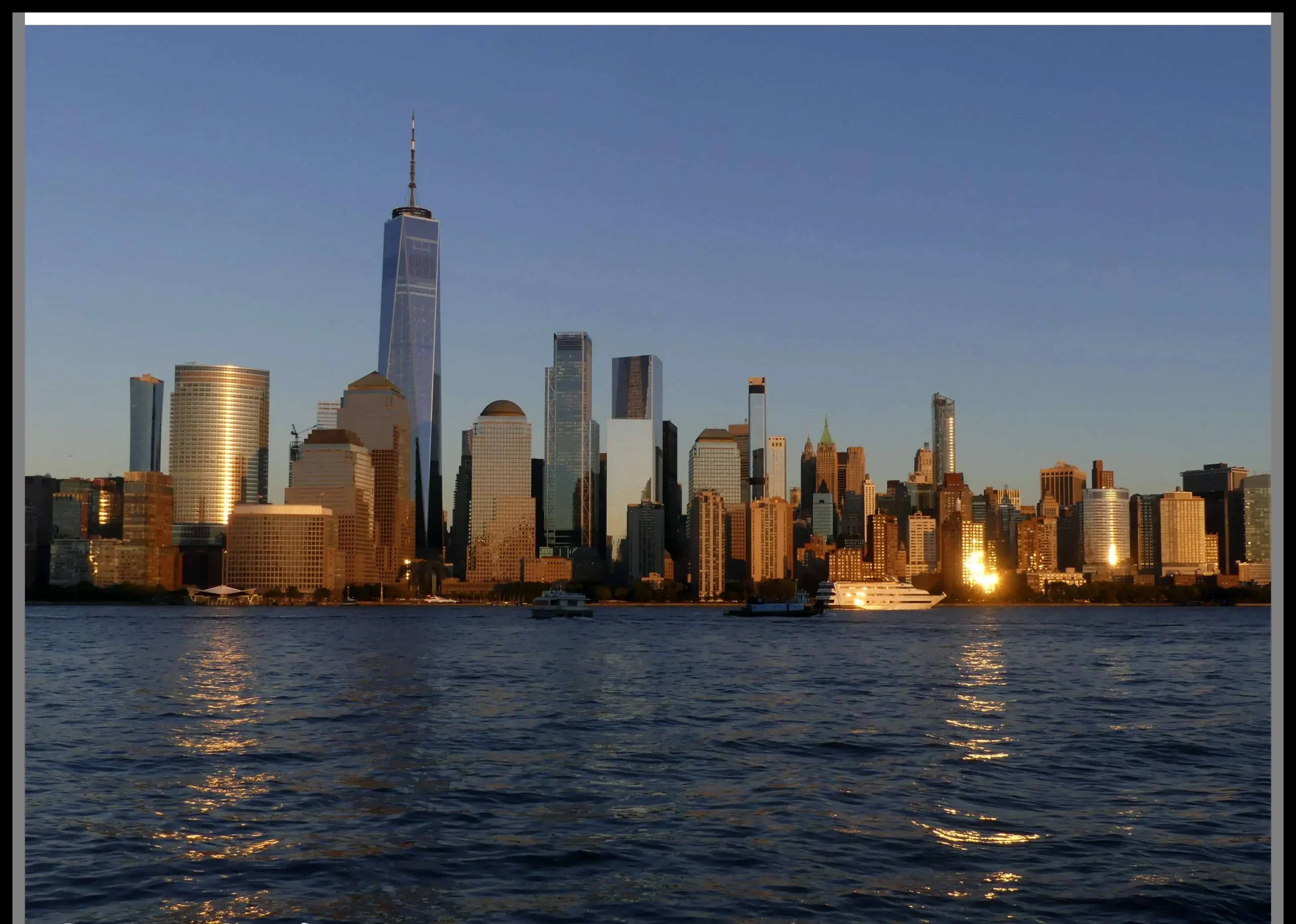
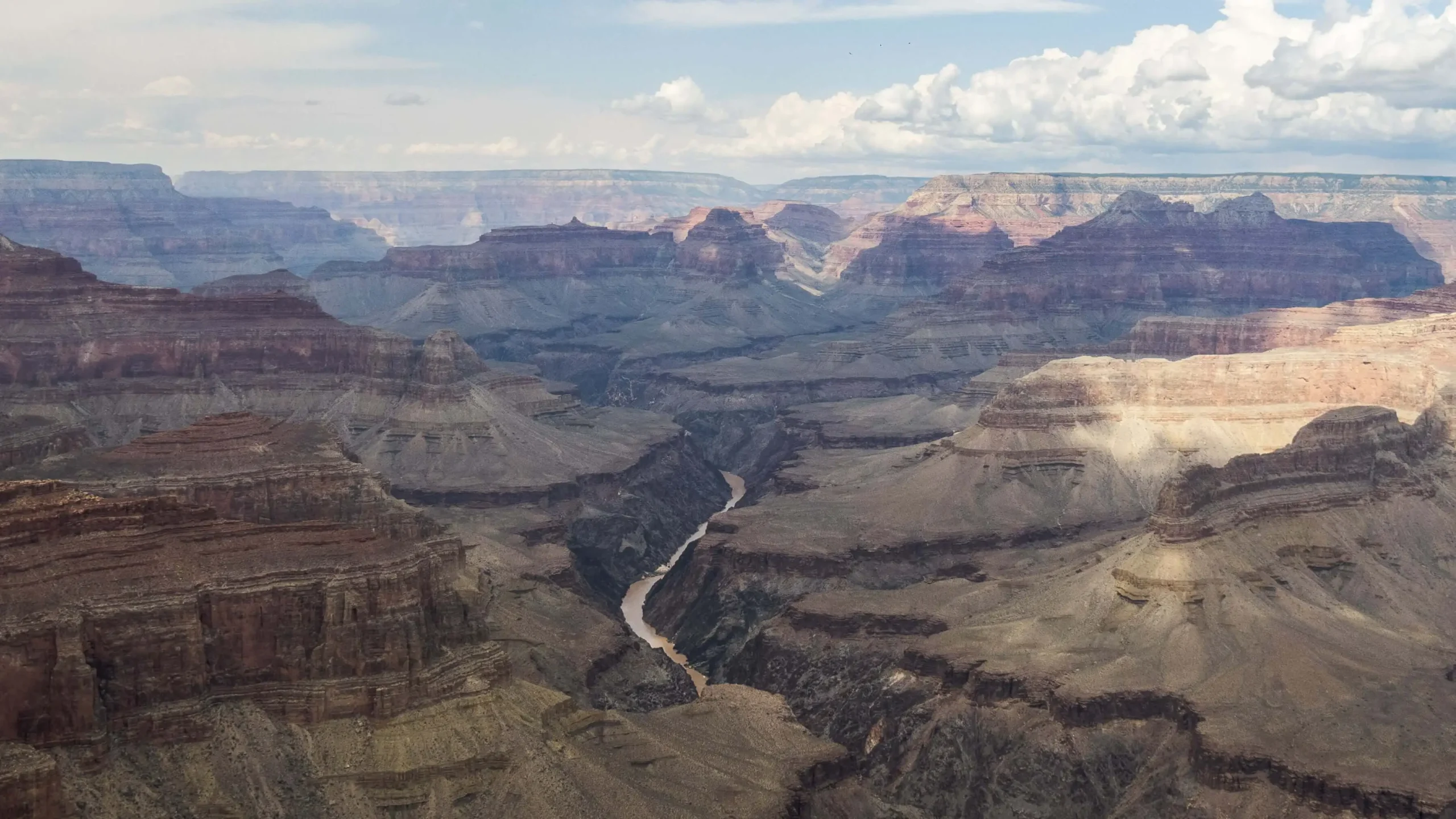
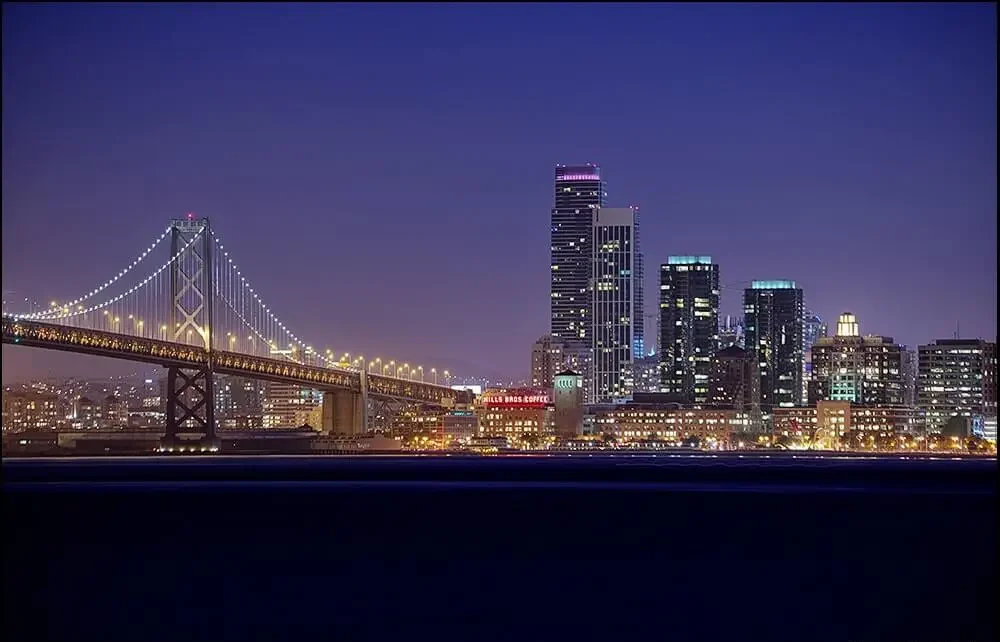
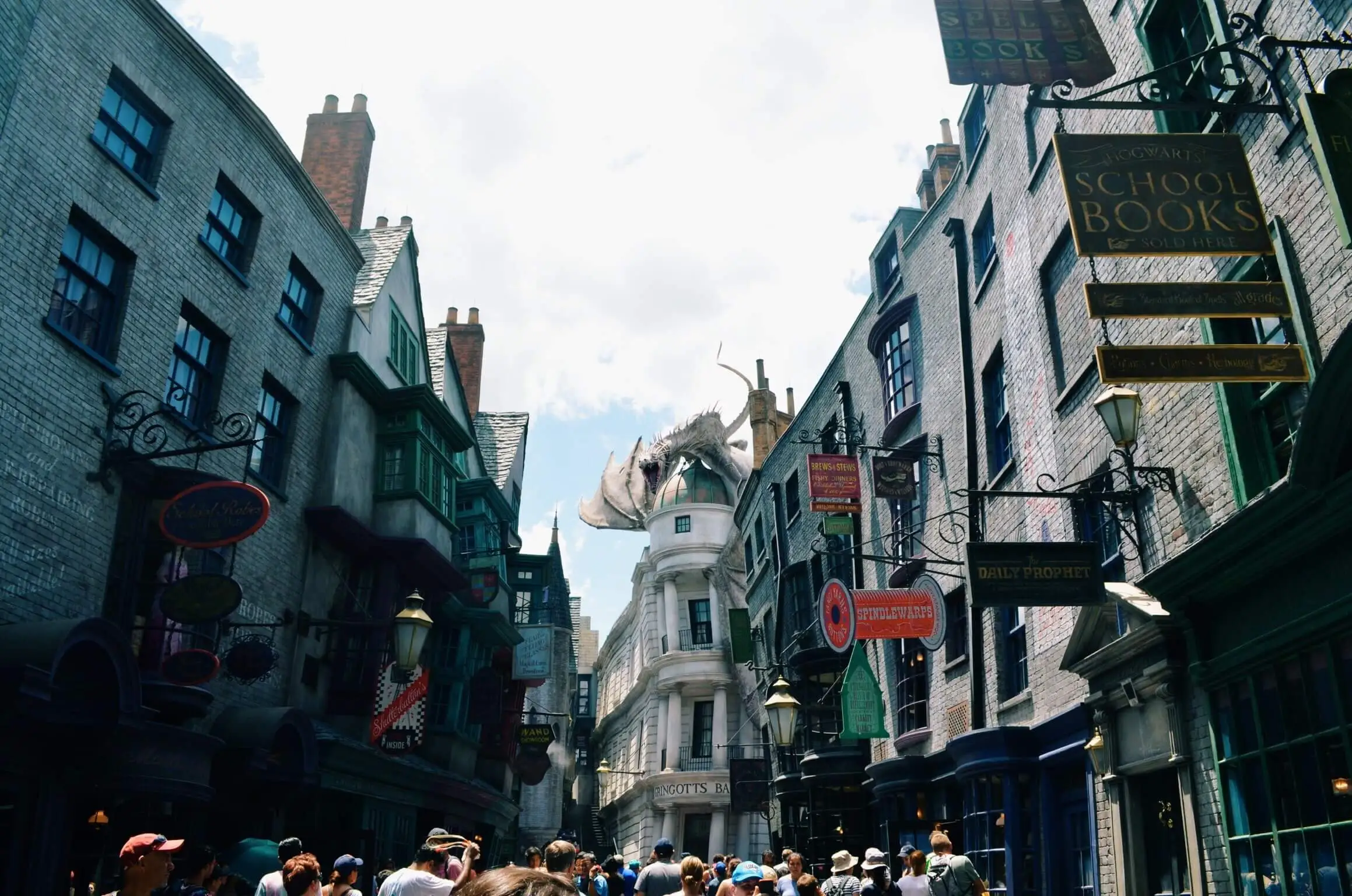
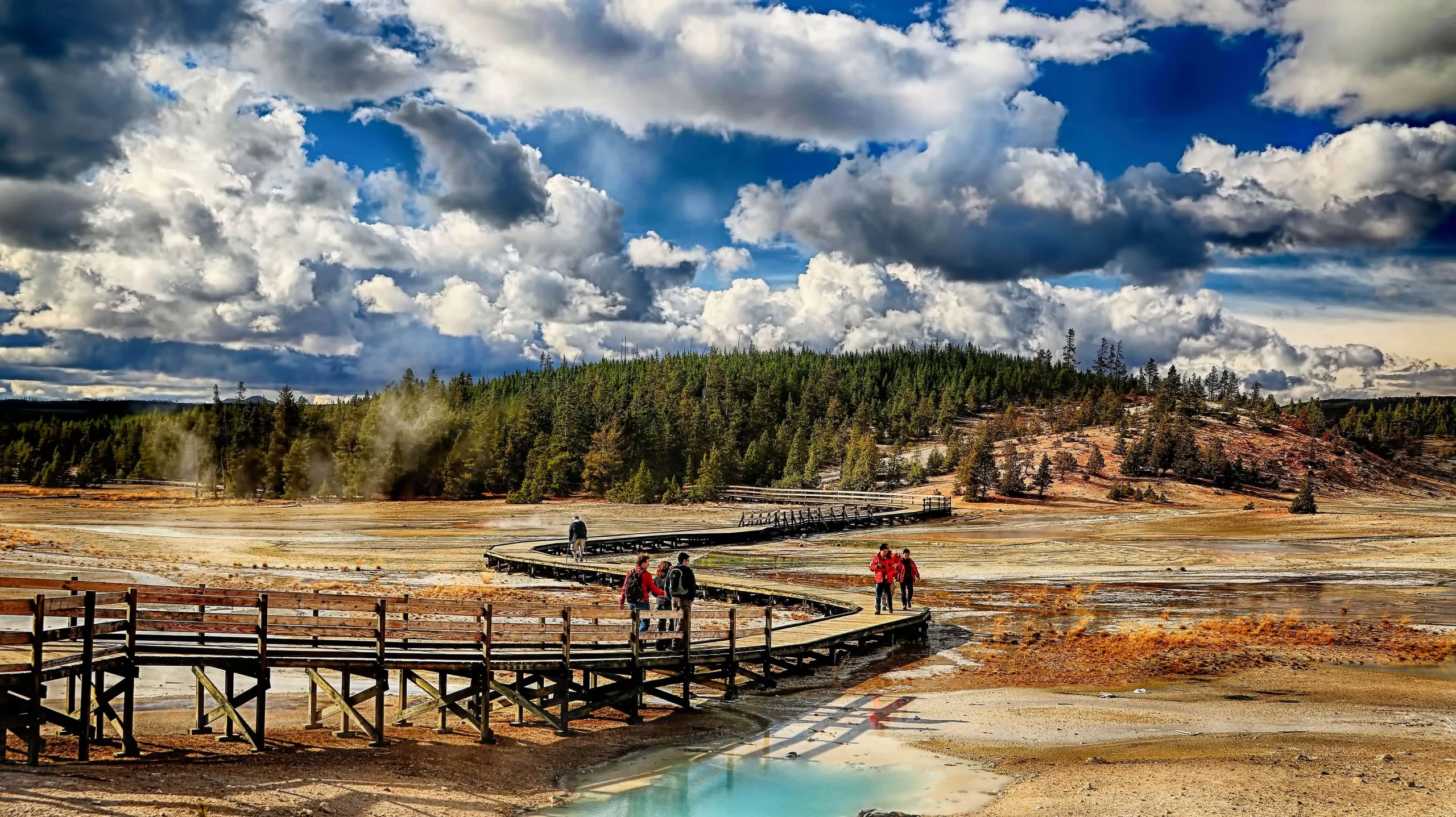
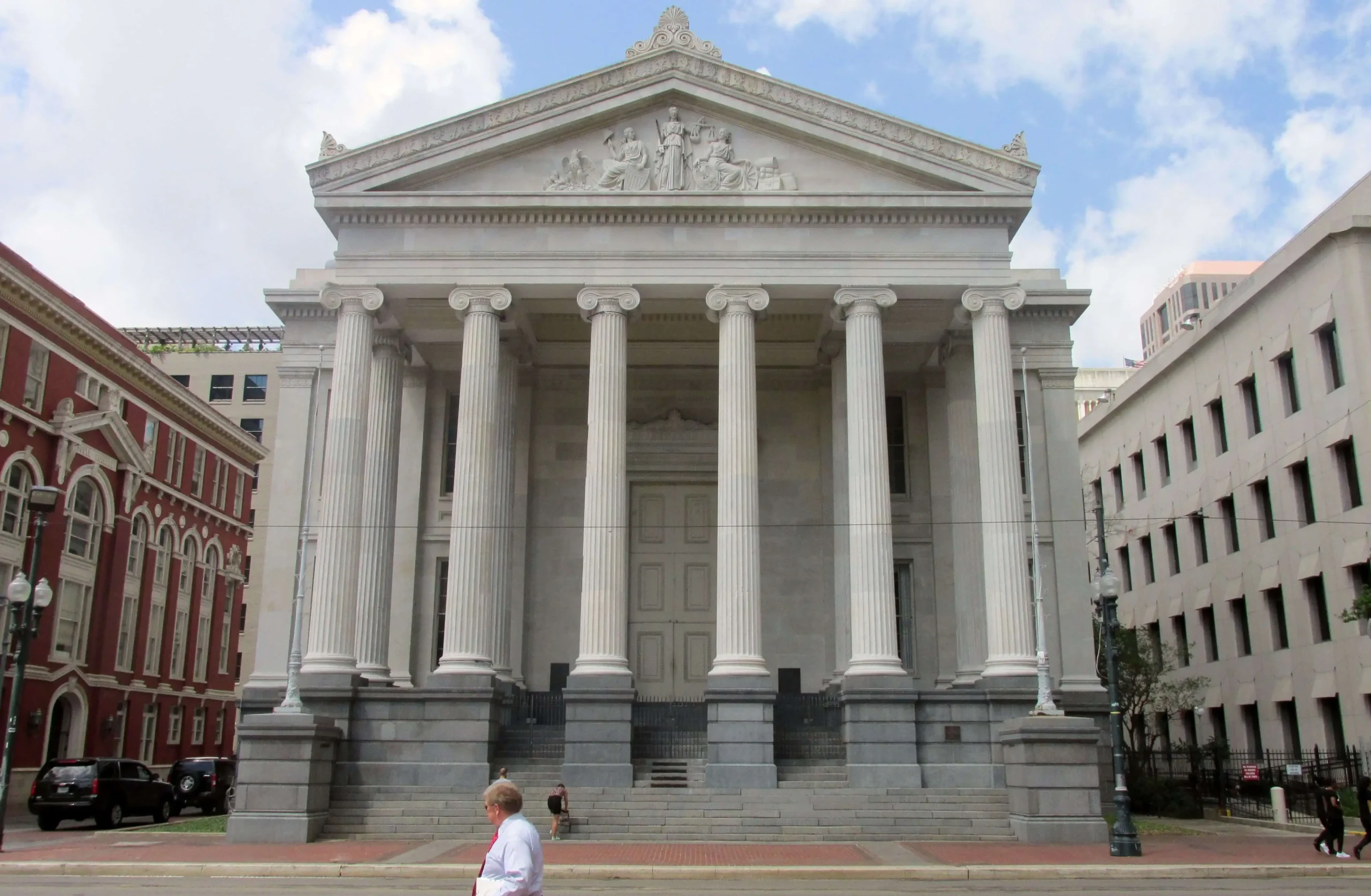
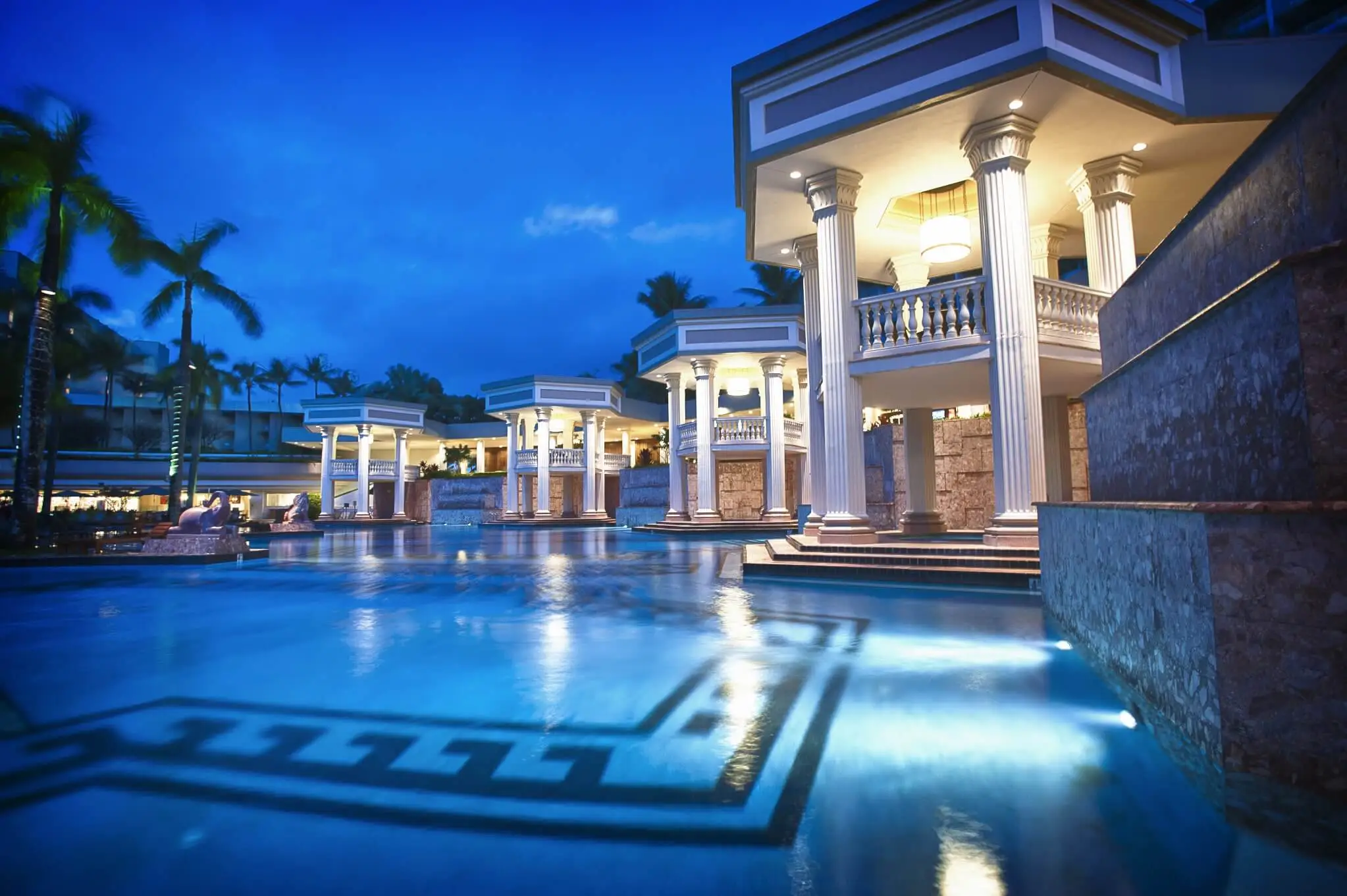
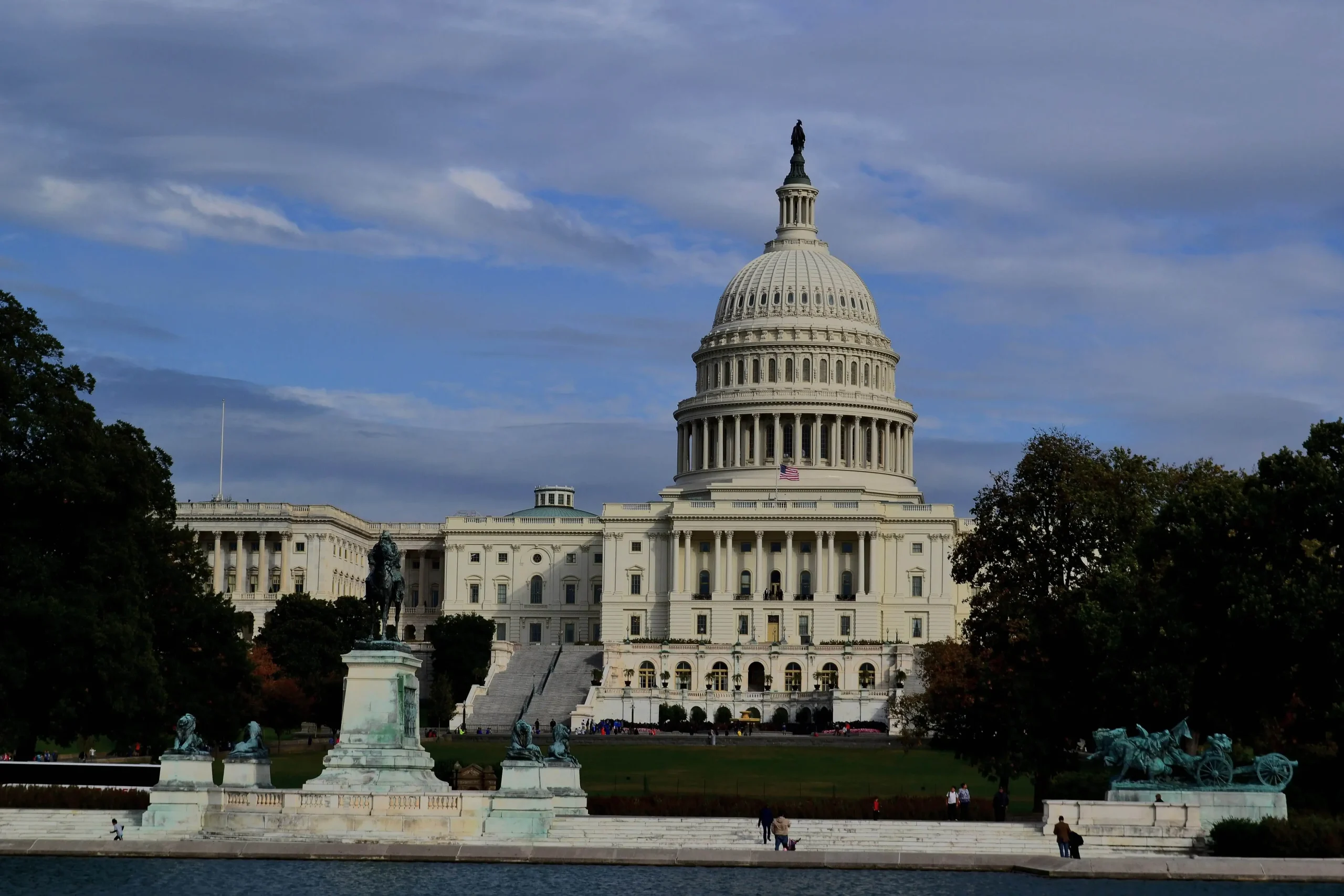
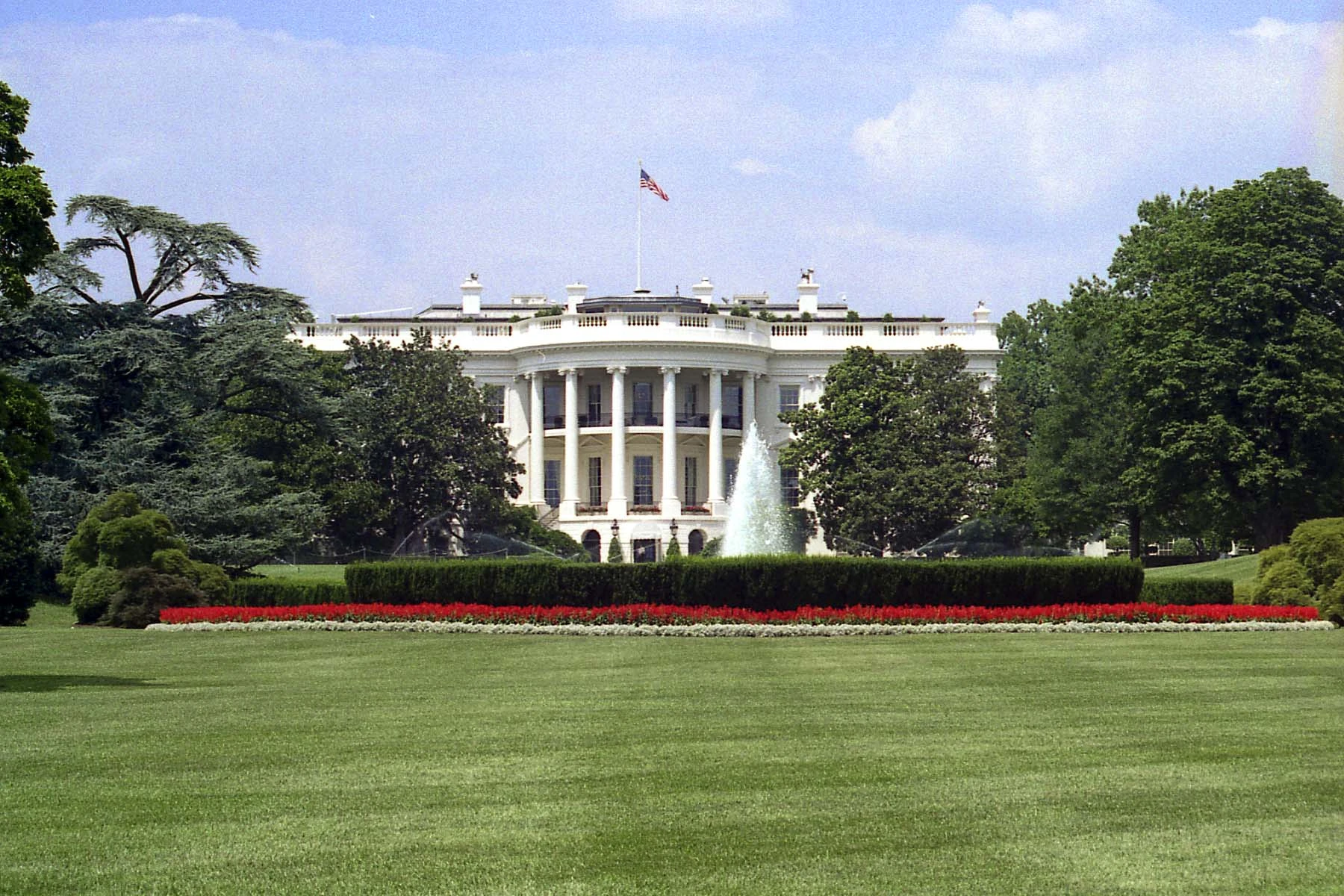

Leave a Reply
You must be logged in to post a comment.